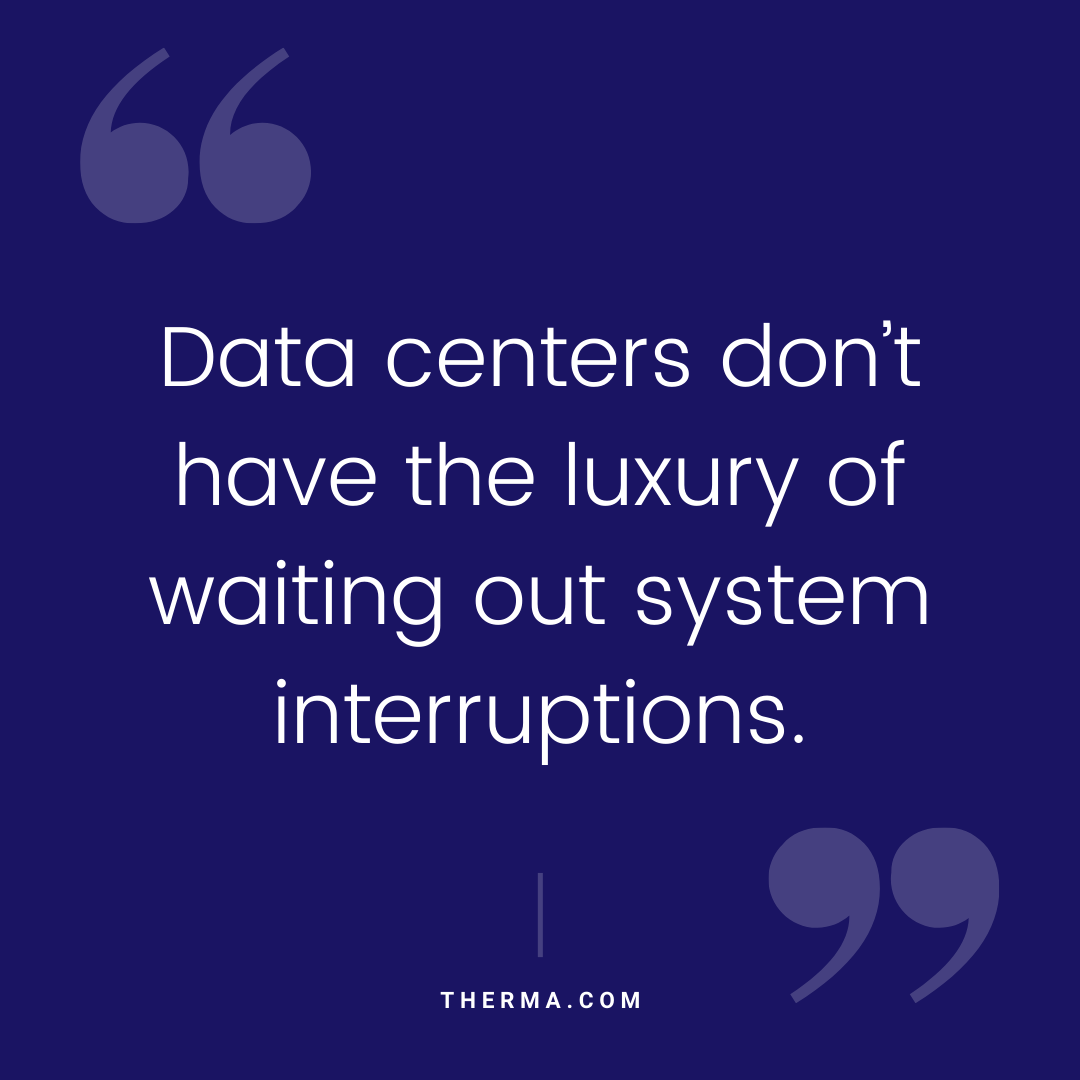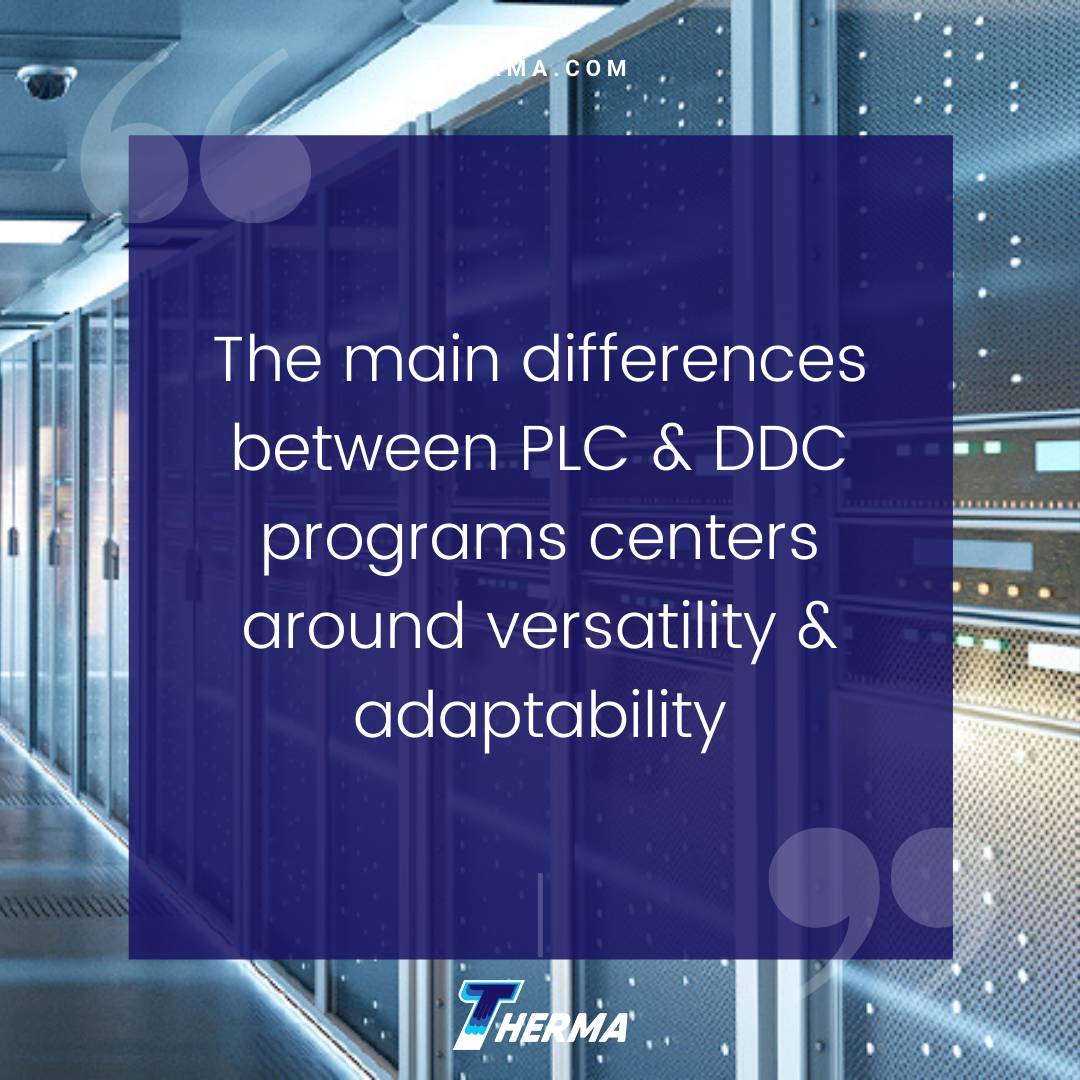Managing a data center is never easy. From maintaining uptime to reducing expenses to managing energy usage and costs, most days bring new challenges for managers expected to do more with less.
Because they are mission-critical ecosystems, data centers don’t have the luxury of waiting out service or system interruptions. Despite downtime often carrying significant consequences, many data centers use commercial direct digital control (DDC) control systems similar to those in play for most office buildings.
It’s important to note that most office buildings accept a certain downtime percentage, moving forward once everything is operational again; data centers cannot afford to do.
Gartner estimates the average downtime event to cost upwards of $5,600 per minute, but notes that figure is just “an average.” The Ponemon Institute puts that figure closer to $9,000 for every 60 seconds of downtime.

Data Center Control Systems
In addition to their mission-critical status, data centers have specific HVAC requirements unmatched by conventional office buildings. If datacenter control systems fail to respond accurately and immediately in critical instances, they can experience catastrophic failure, despite built-in redundancies such as air handlers or power sources.
To combat this, many mission-critical environments such as infection control facilities and pharmaceutical labs rely on combining:
- Supervisory control and data acquisition (SCADA) computers and programmable logic controllers (PLC), or
- Distributed control systems (DCS) to successfully perform equivalent tasks.
Supervisory Control And Data Acquisition (SCADA)
SCADA (supervisory control and data acquisition) is a software program used in process control and real-time remote data gathering that allows for remote administration of specific equipment and environmental conditions.
SCADA’s hardware sensors collect data and send it to the software program where the data is analyzed. SCADA logs all system events, triggering alarms or other alerts if conditions become unstable or pose a potential downtime threat.
Programmable Logic Controllers (PLC)
Programmable logic controllers (PLC) are small, modular solid-state devices (SSD) that use personalized commands to complete specific tasks. These mini-computers are used within industrial control systems (ICS) and are prevalent in various industries, most often replacing cam timers, drum sequencers and mechanical relays.
PLCs are valuable tools when it comes to information gathering. The information they collect can often serve as feedback to identify process areas that could profit from improvement, with PLCSs capable of implementing recommended modifications.
Distributed Control System (DCS)
A distributed control system (DCS) is an automated ICS that monitors various machine parts and offers instructions. DCS allows specific machine sections to have a dedicated controller for running the particular operation. DCS is frequently used in manufacturing environments to regulate industrial processes while increasing safety, reliability and cost-effectiveness.
DCSs are contain both hardware and software components. They function similarly to SCADA and are used in many of the same industries. SCADA, however, tends to be used in situations benefiting from remote control.
Industrial vs. Commercial Style Controls
Industrial systems typically use PLCs, available in a variety of sizes and application use. PLCs are popular choices thanks to their enhanced accuracy and uptime, increased device and sensor ruggedness, signals and wiring systems. PLCs deliver greater performance over more agile networks with increased flexible programming options.
Commercial systems typically use a combination of unitary controllers (UNT), electronic devices used to control unit ventilators, packaged air handling units, fan coils and other components serving a dedicated zone digitally. UNTs control a specific piece of equipment with larger building controllers used to complete facility-wide programming tasks or monitor input/ output points.
The main differences between PLC and DDC programs centers around versatility and adaptability
PLCs offer numerous powerful programming functionalities without the need to shut down the controller to modify the programming and many allow for customized user-defined functions.
The new normal has made today’s data center ecosystem more demanding than ever. Combining PLCs Increased ruggedness and customizable capabilities with SCADAs real-time data collection and assessment can help increase productivity today while delivering the long-term values associated with dependability and performance.
If you are exploring ways to optimize your data center, reach out to Therma today. Our engineers can help you identify and assess the best control options for your data center.








